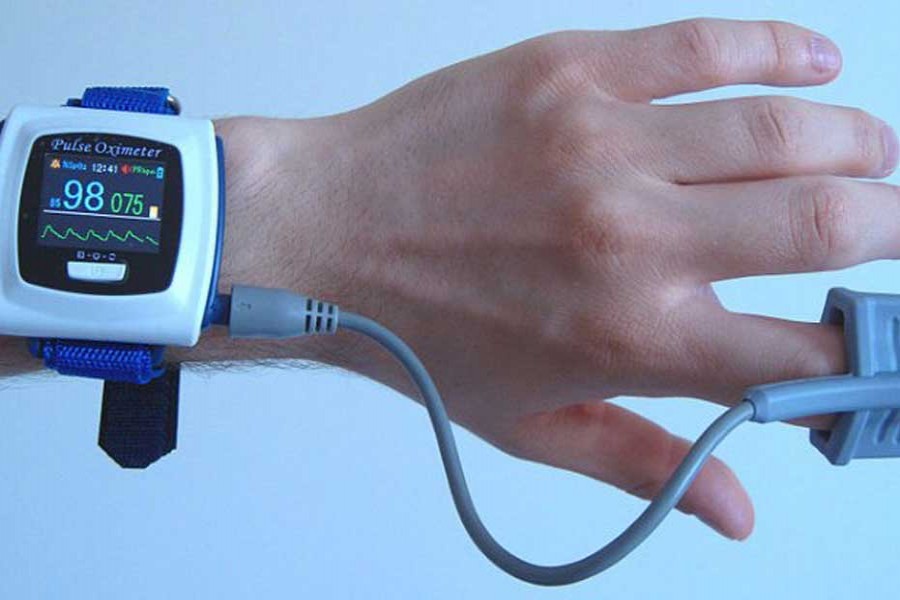With the support of diverse wearable devices, from watches to apparel, measuring vital health signals has become easily accessible. Not so long ago, a visit to the chamber of a cardiologist used to be the occasion to see the electrical activity related to the blood pumping behaviour of the heart (known as electrocardiogram or ECG) being printed on special purpose paper. But today, a smart wrist watch offers diverse health services starting from monitoring ECG to tracking Oxygen, stress, sleep, calorie and metabolism-all in real-time.
Even a sleeveless shirt embedded with heart rate-monitoring sensors with a motion-tracking sensor "pod" underneath the collar makes vital signal monitoring to track speed, distance and acceleration during real-life activities. Despite the ease of use, the efficacy of these easily measurable vital health parameters in improving our health condition is still a question, waiting to be clinically proven.
The race of wearable health devices is not only driven by the curiosity of technology invention and innovation. In advanced economies, healthcare cost has already surpassed 10 per cent of gross domestic product (GDP). In addition to doctors, nurses and hospitals, technology giants have eyed to have a portion of this expenditure as their revenue.
As consumers, medical centres and insurers increasingly embrace health-tracking apps, technology companies want a bigger share of the more than $3 trillion spent annually on healthcare in the USA alone. Although in developing countries as a percentage of GDP, healthcare budget is relatively low, but it has been accelerating, particularly to meet the sustainable development goal of offering Good Health.
Money flow to accelerate innovation in wearable healthcare devices has already surged. In the first 11 months of 2017, 10 of the largest technology companies in the United States were involved in healthcare equity deals worth $2.7 billion, up from just $277 million for all of 2012, according to data from CB Insights, a research firm that tracks venture capital and start-ups. Companies are also busy in developing patent portfolio in claiming emerging innovation territory. Among 41,301 patents published on wearable electronics between 2010 to May 2015, health-monitoring accounts for 10 per cent of wearable patents.
Major technology companies are highly active in research and development. In wearable electronics, patents published between 2010 to May 2015, Samsung accounts for 4 per cent. Following close behind in the rankings are Qualcomm with 3 per cent and Apple with 2.2 per cent.
In the age of robotics and artificial intelligence, although we are concerned about job loss by technology, not all technological innovations are job killers. Wearable healthcare technologies have significant potential to improve our quality of life, and also to create additional jobs. It has the potential to make healthcare accessible as well as affordable to large unserved population and also to create quality innovation jobs-an opportunity of creating both wealth and jobs simultaneously.
The growing elderly care appears to be an area to significantly benefit from wearable healthcare innovations. It's predicted that by 2025, the world population is likely to be 8 billion, of which approximately 15 per cent, or 1.2 billion, will be elderly. Wearable health device could be of great help to them. Digital technologies, and specifically the wearable Internet of Medical Things (IoMT), have tremendous potential to help us provide assistance to the growing elderly population with fewer caregivers. To deal with the resistance often shown by seniors to wearable medical devices, design is a critical factor for wearable devices for seniors.
It's reported that as technology becomes smaller, smarter and integrated-whether it's smart watch, fitness tracker or even apparel-- the tech you can wear to keep tabs on your fitness levels is more popular than ever. With so many health-improving gizmos on the market and often creating confusion by spreading hypes through the social media, it's not easy to separate those that are truly beneficial from those that are nothing more than a gimmick.
Despite the surge of investment for wearable healthcare device innovations and availability of diverse gadgets, physicians and researchers caution that it is too early to tell whether the continuous-monitoring tools, like apps for watches and smartphones, will help reduce disease and prolong lives.
With respect to the efficacy of wearable healthcare devices "there's no shortage of hype," said by an US digital medicine expert as reported by the New York Times in reference to medical experts.
"We're in the early stages of learning these tools: Who do they help? Who do they not help? Who do they provide just angst, anxiety, false positives?"
Wearable medical devices are well on the track of offering benefits to all-- from new born babies to senior citizens. These devices can be of immense help for developing countries to take quality healthcare services to the doorsteps of millions of people, who are not provided even with primary healthcare.
Moreover, wearable device-based healthcare service could be an opportunity for many countries to trigger innovation economy. Instead of asking for additional fund to buy readily available discrete devices from global technology companies, developing countries should focus on integrated healthcare service delivery system by leveraging those devices and ubiquitous wireless connectivity.
They should also conceive of local innovations around those devices to maximise clinical benefit. Necessary R&D funding should be mobilised and policy should be reformed creating demand for local innovations, so that competition is intensified to nurture creative ideas emerging from R&D outputs as profitable healthcare innovations-forming the breeding ground for new generation startups.
M Rokonuzzaman Ph.D is academic, researcher and activist on technology, innovation and policy.


